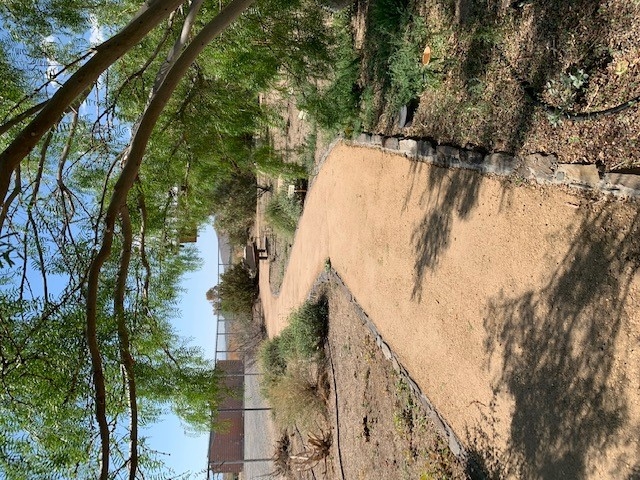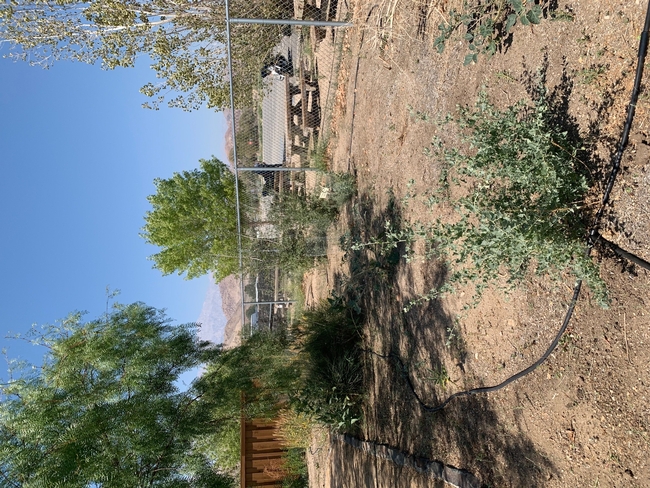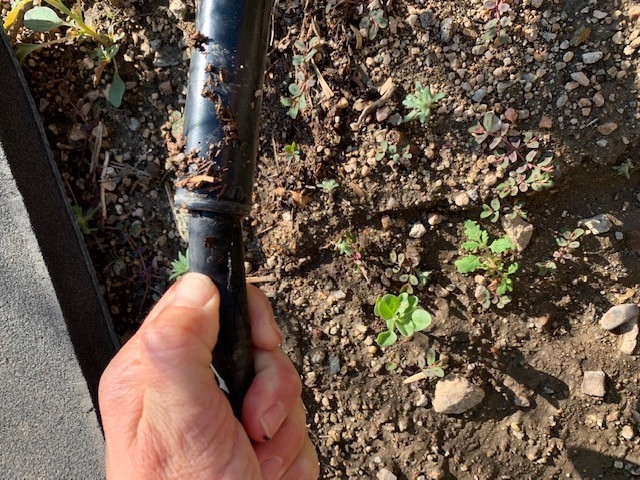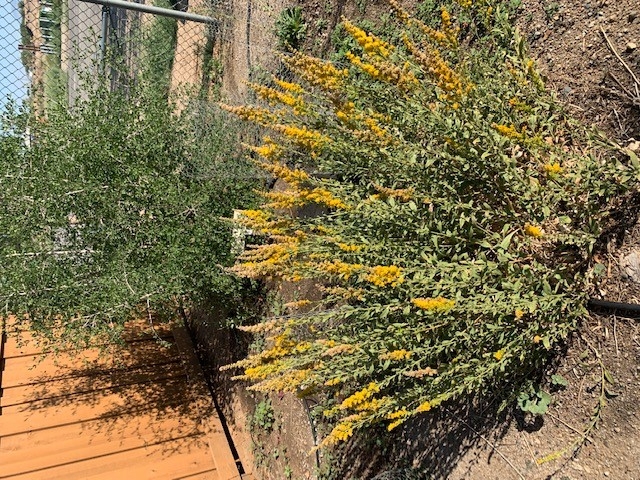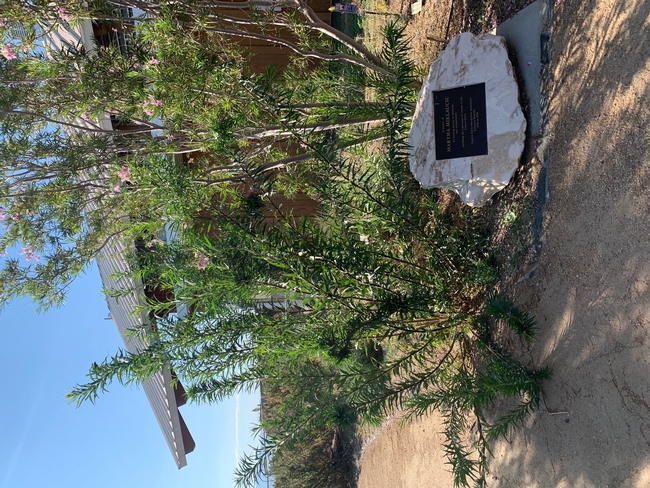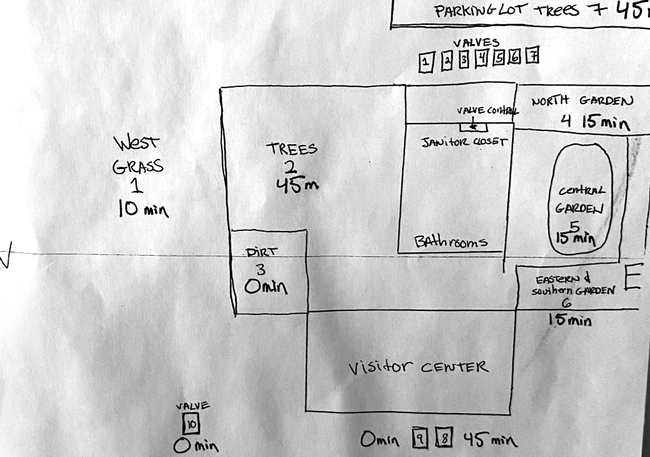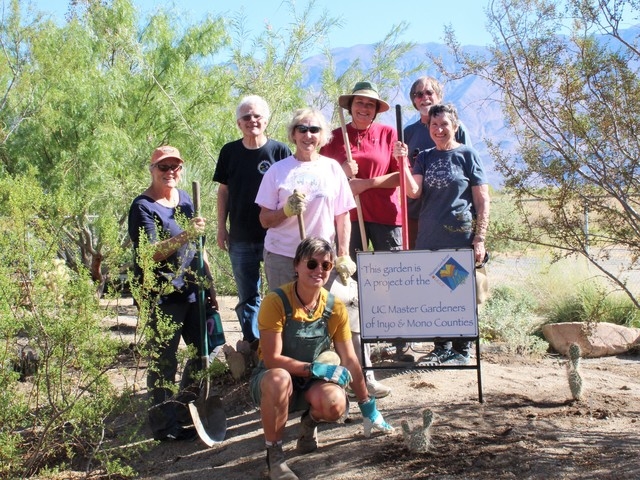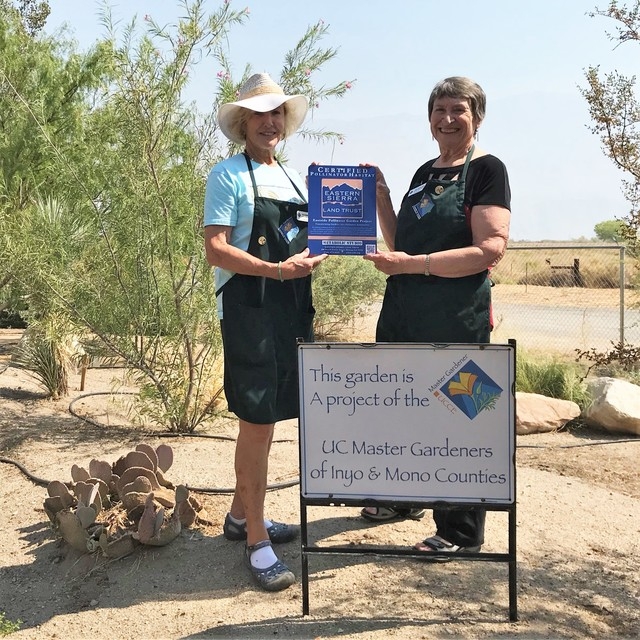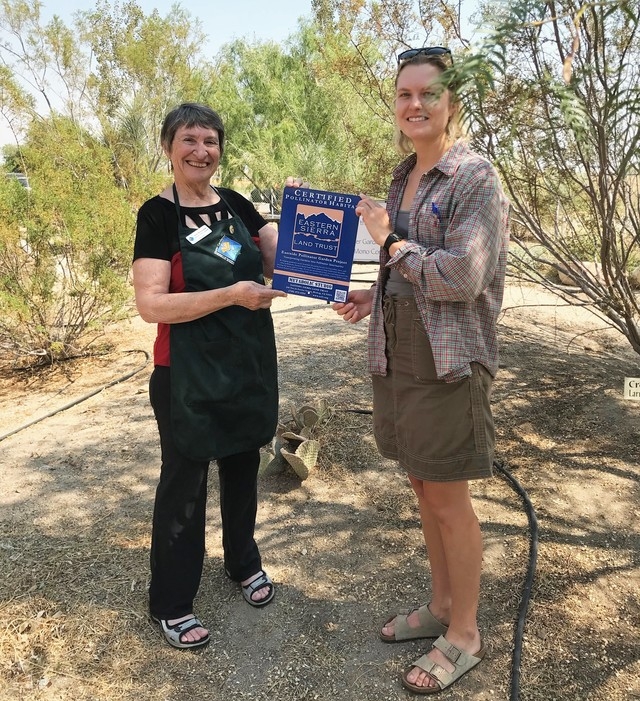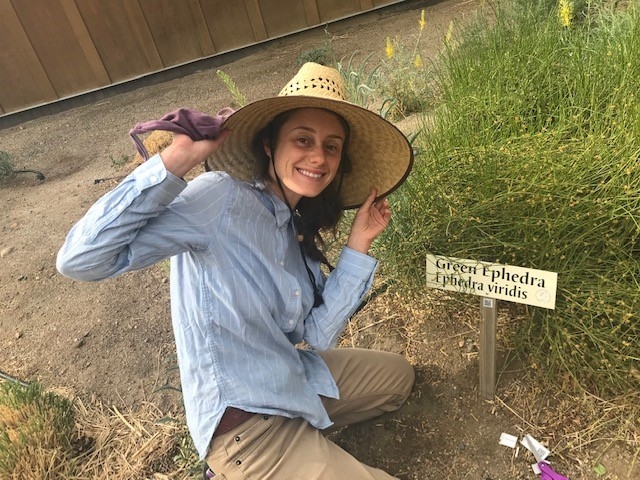- Author: Venessa Smith
- Contributor: Dustin Blakey
It's been a while since we've posted an update to the garden, but there has been a lot of activity since then!
As you can see from the pictures there has been significant work done in weeding and straightening up the site. It looks a lot better.
The rains this summer brought lots of weeds, but also growth of the native plants.
The sun has dry rotted some of our irrigation tubing, so leaks have sprung up in places. We've fixed the leaks and done a bunch of weeding and clean up since leaks encourage their growth, too.
On Saturday October 15th, we will be having a work party of volunteers to install the new native plant signs. The signs will have the common name, scientific name, and a QR code for visitors to scan to learn more about the plants. The new sign design was a collaboration between ESIA, BLM, and UC Master Gardeners of Inyo and Mono counties. ESIA has graciously provided the signs for the garden.
Be sure to check out the new signs on your next visit!
- Author: Dustin Blakey
With irrigation season now here, it's a good idea to give a sprinkler system a thorough inspection. We've just reviewed the system here at the garden to make sure it's operational.
While running and checking all the parts is a good idea, you have to know where all those parts may be! It's common in Owens Valley to have "improvised" irrigation that years down the road makes little sense, even if during installation it seemed like a perfectly logical thing to do.
It a very good idea to document your system. Make notes about how it all works, where things are, settings that work, and parts used. We've just completed this task at the garden and have placed our notes here for posterity. Maybe someday in the distant future a gardener will wonder what was going on. Perhaps this will help, if there is still an internet!
Irrigation Map Document
ESVC Irrigation System Overview
- Author: Edie Warkentine
- Author: Erich Warkentine
After spending more than a year working at the native plant garden, Master Gardener volunteers have successfully “conquered” the intrusion of weeds, death through over-watering of cacti, overgrowth of ambitious native plants, decline of fragile plants, and other challenges of maintaining a demonstration native plant garden in a somewhat hostile environment.
At our most recent work party, we took advantage of the annual native plant sale conducted by the Bristlecone Chapter of the Native Plant Society, and the generous grant of the Eastern Sierra Land Trust through its Eastside Pollinator Garden Project, and planted over 25 new plants. Many of the plants, such as milkweed, datura, and silver cholla were replacements for plants that had died. Others, such as columbine and mountain mahogany, were new natives introduced to bring color and additional diversity to the garden.
Anyone who has an opportunity to visit the garden at the Eastern Sierra Visitors Center in Lone Pine should be sure to stop in and see how diligent maintenance is paying off. Bring your phone and aim the “camera” feature at the QR codes posted on the signs to help identify plants and link to the native plant society's website for more information about each plant.
We all have our fingers crossed and look forward to the new plants taking root and growing healthily and happily into the future.
- Author: Edie Warkentine
We're Certified!
The native plant garden at the Eastern Sierra Visitors Center (ESVC) is now a Certified Pollinator Garden!
The Eastern Sierra Land Trust (ESLT)'s Eastside Pollinator Garden Project encourages the creation of pollinator-friendly gardens in Inyo and Mono County. To become certified, the garden must feature:
- Three "food" features
- Both of 2 "water" features
- Two "shelter" features
- Plants native to California (preferably the Owens Valley) make up 50% of the Pollinator Garden space
- Minimal artificial lighting unless illuminating a structure or hazard
These are described below.
On August 27, 2021, Master Gardeners Edie Warkentine and Joanne Parsons met with the ESLT's Americorp Volunteer in charge of the Eastside Pollinator Garden Project, and received the official certification plaque, which we now proudly display at the entrance to the native plant garden.
Food Features
Clump plantings: plant each variety in groups of three (excepting trees)
Seasonality: The garden has three different bloom times
Diversity: The garden has three different scents, three different flower types, and/or three different flower shapes
One bird or butterfly feeder, such as:
- Thistle feeders for Goldfinches
- Fruit feeders for Orioles
- Nectar feeders for Hummingbirds
- Rotting fruit set out during butterfly migration
Larval host plants, such as: Milkweed, Indian Paintbrush, Mallow, Hollyhock, Dill, Sunflower, and more
Water Features
One water source:
- Wet irrigation ditches
- Bird baths
- Natural water features (pond, creek, etc.)
One water conservation measure:
- Mulching
- Lawn removal
- A drip irrigation system
Shelter Features
One natural shelter:
- Bare ground
- Dead wood
- Brush piles
One constructed shelter:
- Bird nesting boxes
- Bat houses
- Bee boxes
- Bee nesting logs
- Author: Edie Warkentine
The Demonstration Native Plant Garden at the Eastern Sierra Visitors Center (ESVC) has grown into the 21st century! Thanks to the excellent work of Master Gardeners Ariel Bohr and Katie Rodriguez, we now have QR[1] codes, linking plants to the California Native Plant Society website, posted in the garden.
Although our goal is permanent signs with QR codes attached, as an interim measure, Ariel and Katie have added QR codes to existing signs. Visitors to the garden can now use their smart phones (using the camera feature) to learn all about each identified plant.
Ariel and Katie first began this project with an eye to finalizing a brochure for the garden – a project that was begun by others several years ago. However, we quickly realized that a combination of limited resources and a desire to keep paper waste to a minimum made a physical brochure an undesirable option at this time. Technology provided a better option!
Katie and Ariel carefully went on their own plant identification search through the garden to see what has survived from past identification efforts and what has been introduced. They decided to add QR codes only to an individual specimen, even if there were others in the garden. In the future, they hope to develop an interpretative game for children who visit the garden, asking them to find all of a particular kind of plant, based on the one that has already been identified for them.
With the installation of the QR codes, and all the spring blooms, the garden is now ready for visitors!
___________________
[1] Wikipedia defines a QR code (abbreviated from Quick Response code) as a type of matrix barcode (or two-dimensional barcode) invented in 1994 by the Japanese automotive company Denso Wave. A barcode is a machine-readable optical label that contains information about the item to which it is attached.

